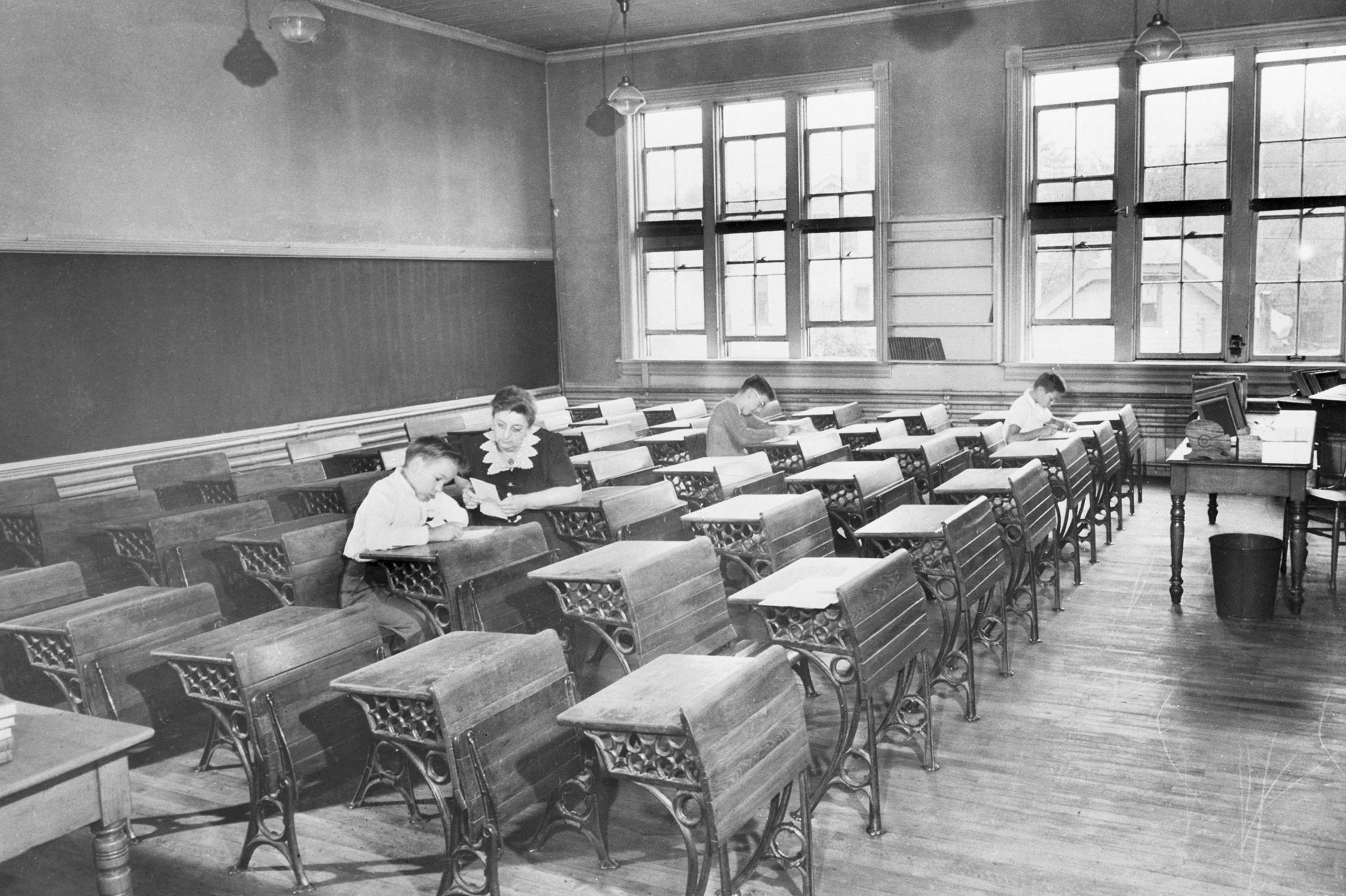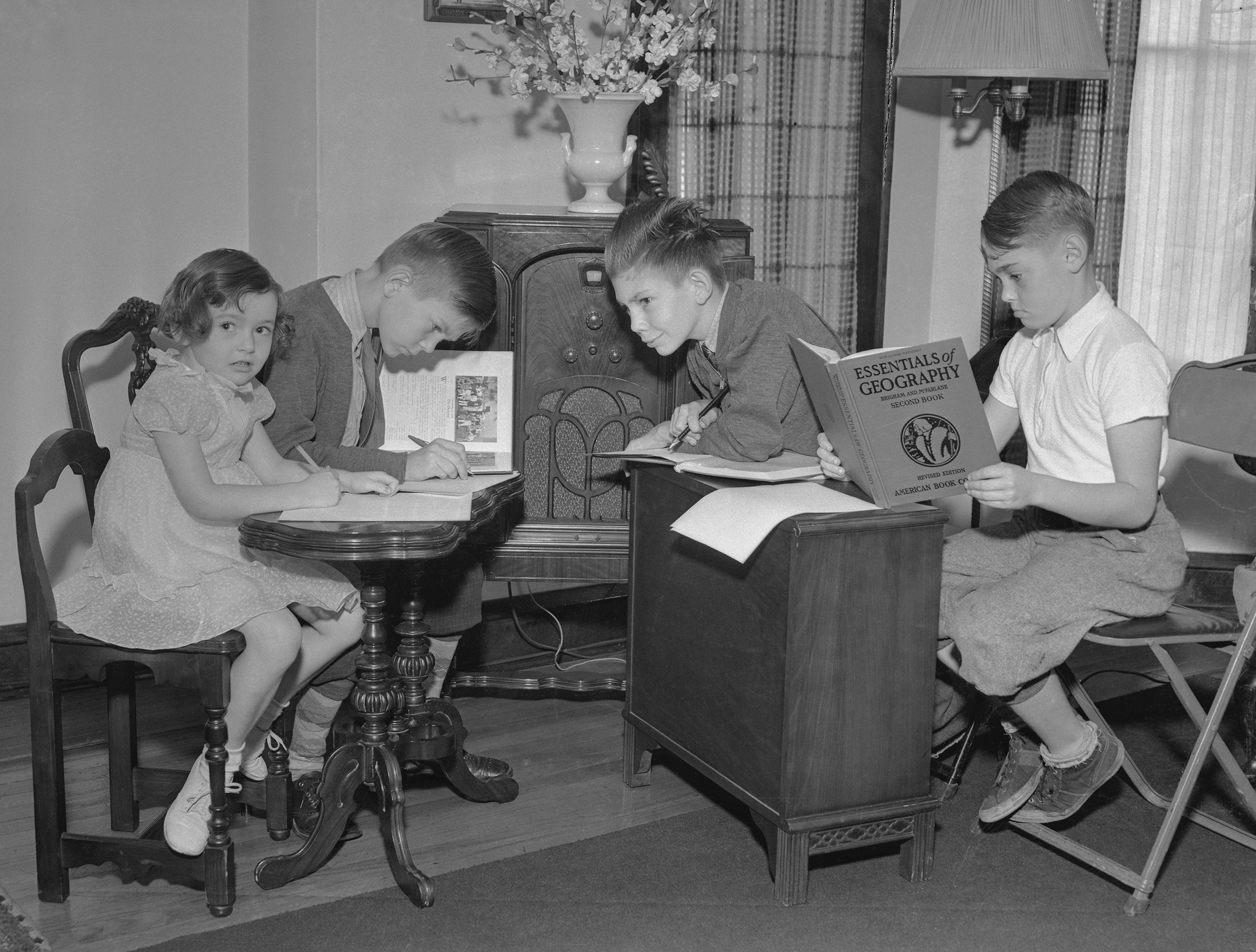
Six-year-old Janice Flood Nichols and her twin brother, Frankie, were looking forward to Halloween festivities in the Syracuse suburb of DeWitt, N.Y., in 1953 when he came down with what seemed like a cold. But soon he had difficulty breathing and, by Halloween morning, Frankie had been diagnosed with polio. He died the next night.
Eight children in their first-grade class would also fall ill with the dreaded disease; two more died. The night her brother was buried, Nichols was hospitalized with the same disease. She was placed in an isolation room and could only see her parents—who brought the family’s dog—through a window.
“That’s the only memory I have, because they weren’t allowed to visit me,” recalls Nichols, who made a full recovery from paralysis and wrote about her experience in Twin Voices: A Memoir of Polio, the Forgotten Killer.
Polio struck communities like DeWitt seemingly at random. The United States had previously experienced outbreaks, but from the mid-1940s to mid-1950s, they came with relentless regularity. While the two diseases diverge significantly, the sense of powerlessness and unpredictability polio brought resonates in today’s COVID-19 pandemic, not least in the way outbreaks can affect the classroom.
The question of schools reopening is the subject of intense national political debate; states vary in their mandates and timelines for in-person instruction. Parents and educators are grappling with tough decisions about when, how or even if children should return to the classroom this fall, weighing social and educational needs against health concerns. Amid this confusion, the dilemmas parents faced in the mid-20th century can help put the long and uncertain road ahead in perspective.
Polio sometimes cropped up in the spring or lingered into fall, infringing upon the academic year—and catching communities off guard, since its seasonal surges came predominantly during the summer months. In San Antonio, Texas, an outbreak in the spring of 1946 closed schools at first for a couple of weeks—and then for the remainder of the term, disrupting graduation festivities and prompting quarantines.
Despite misunderstandings about how the virus was transmitted (mosquitoes and flies were incorrectly considered culprits), parents knew it was highly contagious, and spread when their children were in close contact with others. Social distancing—in the parlance of this pandemic—was the foremost countermeasure, even if it meant keeping kids cooped up when an outbreak abruptly halted summer fun.
Get your history fix in one place: sign up for the weekly TIME History newsletter
“There was tremendous fear, and they would close swimming pools and bowling alleys and beaches and try to keep kids out of crowds,” says David Oshinsky, author of Polio: An American Story and director of the Division of Medical Humanities at NYU Langone Health. “My mother would give me a polio test every couple of days—could I touch my toes, could I put my chin to my chest?”

It was a sickness harbored by silent carriers—the majority were asymptomatic. “There was a vast area below the tip of the iceberg of people who were shedding the virus unknowingly, which scared parents,” says Dr. Paul Offit, director of the Vaccine Education Center and a professor of pediatrics in the Division of Infectious Diseases at Children’s Hospital of Philadelphia. “Therefore, everything became a threat.”
Though newspapers ran tallies of death and paralysis, the odds of suffering the most devastating effects were relatively low. (At its peak of almost 58,000 reported cases in 1952, polio caused approximately 20,000 paralytic cases nationwide.) Yet the specter of their children in an iron lung was enough to terrify parents into strictly adhering to precautions, useful or not. Exertion, they were admonished, could worsen symptoms. Fastidiously clean homes were a must. Summer camp or the fair or even school became suddenly terrifying.
During the 1916 outbreak, New York City—which bore the brunt of the nation’s cases and deaths that year—shuttered schools based on rudimentary knowledge of how polio spread. And parents took note when officials announced a policy of “leniency”: 200,000 children were absent even when classes resumed, the New York Times reported. In Minneapolis, a parents’ group lobbied successfully in favor of “playing safe” with additional delays, citing an enduring dilemma: “No one is absolutely sure of being right, one way or the other.”
Later closures also elicited mixed reactions. As the start of school drew near in 1949, some experts felt “schools should not be closed during a polio outbreak nor should their opening be delayed,” claiming neither altered the outcome, according to the Associated Press. Conversely, in 1955, during the last major outbreak in Massachusetts, “school committees—faced with mounting parental anxiety over the polio situation—have postponed school opening dates despite state health officials’ advice to the contrary,” the AP noted.
Both arguments were inherently unproveable because cases naturally fell when summer ended. And responses varied between localities, ranging from precautionary closures after one case to re-opening while polio lingered. The optimal level of acceptable risk was, as it is now, difficult to measure.
Whenever the outbreak, its effects could not be delinked from their contemporary social context. When polio shut Chicago schools in 1937 during the Great Depression, it paralleled today’s “concern that interruptions in learning could be devastating to students, and particularly…those who were already the most disadvantaged,” says Michael Hines, a historian of education and assistant professor at Stanford University. When educators experimented with radio lessons, the shift to at-home education magnified socioeconomic gaps—including disparities in access to technology.

Today, despite echoes of shorter closures, COVID is wreaking havoc on education at a magnitude that defies comparison. U.N. Secretary-General Antonio Guterres recently warned of a “generational catastrophe” globally that could “exacerbate entrenched inequalities.”
“The longer this goes on, the further it will compound the damage, especially for those who are on the margins,” says Hines.
Nonetheless, a recent Gallup poll shows a majority of parents don’t want their children back in classrooms full-time yet. Springtime hopes of incremental disruptions have vanished; pandemic closures appear to be here for the long haul.
Polio was eventually defeated in the United States, thanks to vaccines administered to millions of schoolchildren in 1955. But the long journey to that point is a cautionary counterbalance to our impatience for a silver bullet to diminish the threat from COVID. For now, factors like vaccine development and efficacy remain “wild cards,” says Oshinsky. “Will we be talking about it in the fall of 2021? Yes, we will.”
Perhaps the starkest truth the history of polio shows us is how little control we have in the face of a virus. Year after year, parents bore the anxiety of coping with an invisible threat to their children’s health, mitigating it as best they could within the constraints of their knowledge and foresight. Though her mother took every precaution possible, “in the end,” says Nichols, “parents knew there was no way they could completely protect their children.”
More Must-Reads From TIME
- What Student Photojournalists Saw at the Campus Protests
- How Far Trump Would Go
- Why Maternity Care Is Underpaid
- Saving Seconds Is Better Than Hours
- Welcome to the Golden Age of Ryan Gosling
- Scientists Are Finding Out Just How Toxic Your Stuff Is
- The 100 Most Influential People of 2024
- Want Weekly Recs on What to Watch, Read, and More? Sign Up for Worth Your Time
Contact us at letters@time.com